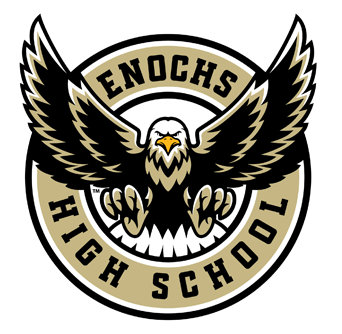Information Support and Services
Software and Systems Development
Games and Simulation
3D Graphics & Animation for Computer Science

Ready to learn how to model realistic 3D objects, characters, creatures, and effects -- then bring them all to life using animation and scripting?
Learn the skills and techniques of the professionals to create realistic 3D for video games, 3d printing, virtual reality, video production, still photography, architecture, manufacturing, marketing, and so much more!
Learn to use the latest in cutting-edge industry standard software including Autodesk 3D Studio Max, Z-Brush, Substance Painter, Substance Designer, Adobe Photoshop, Adobe Premiere, Adobe Character Animator, and VRay.
Learn about 2D Graphics, 3D Modeling, 2D & 3D Animation, Materials & Mapping, Dynamic Texturing, 3D Painting, Dynamic Sculpting, Particle Systems, Lighting & Cameras, Rending, Cut Scene Design, Special FX, Mapping Techniques, and Character Modeling and Animation.
The world of 3D is rapidly expanding, and career opportunities exist in a wide range of fields; including architecture/interior design, product/industrial design, advertising/marketing, entertainment (film/gaming), computer science, geology/science, medical visualization, and civil engineering.
Students will pursue an in-depth study of the 2d and 3d computer graphics and animation fundamentals necessary for advanced studies in computer science; computer graphics; and many other fields. Topics include modeling, printing, painting, sculpting, mapping, lighting, rendering, animation, compositing, visual effects, scripting, and virtual reality.
Modern industry standard computer graphics software applications incorporate robust built-in scripting languages providing the opportunity to transition students from graphics to programming while highly engaging creative-minded students and connecting their interests with their learning. This helps bridge the equity gap in computer science, by attracting creative-minded students that may not otherwise take a computer science course and providing them the opportunity to realize that creativity and coding can be combined; and all students can be successful with both.
While most computer science courses only cover the backend side of development, 3D Graphics & Animation for Computer Science ensures students have the skills they need to work on the front end, which is especially important as a prerequisite for more advanced computer science courses such as Video Game Design, Web Application Development, Artificial Intelligence, and Software Engineering.
Students will demonstrate and apply what they learn through a series of creative, technical, and engaging projects. Projects integrate artistic practices and provide students the opportunity to participate in all aspects of the artistic process -- including creation, presenting, producing, performing, responding, critiquing and connecting. Projects have been aligned with the five strands of the Visual and Performing Arts Content Standards for California Public Schools including Artistic Perception, Creative Expression, Historical and Cultural Context, Aesthetic Valuing, Connections, Relationships, and Applications. Writing has also been integrated through technical writing assignments.
Students will develop the skills and knowledge to be creative partners in industry, while developing problem-solving, analytical thinking, and artistic habits and dispositions important for university-level studies; as they build capacity for employment in many areas of the workforce; preparing for occupations such as Animation Programmer, Cinematics Programmer, Engine Programmer, Graphics Programmer, Gameplay Programmer, Generalist Programmer, Mobile Programmer, Multiplayer Programmer, Physics Programmer, R&D Programmer, Rendering Programmer, Tools Programmer, UI Programmer, 2D Character Artist, 3D Modeler, Advertising Designer, Animator, Character Artist, Character Rigger, Cinematic Designer, Concept Artist, Environment Artist, Game Designer, Gameplay Animator, Level/Environment Designer, Level Lighting Artist, Simulation Artist, Technical Animator, Technical Artist, Texture Artist, UI Artist, and Visual Effects Artist.
Units

Careers
2D Graphics
2D Animation
3D Modeling
3D Printing
3D Painting
3D Sculpting
3D Lighting
3D Rendering
3D Animation
3D Visual Effects
3D Characters
Scripting
Virtual Reality
Production Pipeline
Course Information
COURSE NUMBER: CTE1010901 (S1) CTE1010902 (S2)
RECOMMENDED GRADE LEVEL: 9 - 12
DURATION: 2 semesters (may be repeated for credit)
CREDIT: 5 units per semester
MEETS UC AND CSU ENTRANCE REQUIREMENTS: Yes; “f”
Career Preparation
Animation Programmer, Cinematics Programmer, Engine Programmer, Graphics Programmer, Gameplay Programmer, Generalist Programmer, Mobile Programmer, Multiplayer Programmer, Physics Programmer, R&D Programmer, Rendering Programmer, Tools Programmer, UI Programmer, 2D Character Artist, 3D Modeler, Advertising Designer, Animator, Character Artist, Character Rigger, Cinematic Designer, Concept Artist, Environment Artist, Game Designer, Gameplay Animator, Level/Environment Designer, Level Lighting Artist, Simulation Artist, Technical Animator, Technical Artist, Texture Artist, UI Artist, and Visual Effects Artist
Articulation

This course is articulated with Modesto Junior College. Students that complete this course with a grade of "B" or higher will receive 3 units of CSU transferrable college credit in CMPGR 225: 3D Graphics and Animation.
SSD Pathway
This course is a part of Enochs’s Software & Systems Development pathway. Click here for more information on our pathway and the courses we offer.
